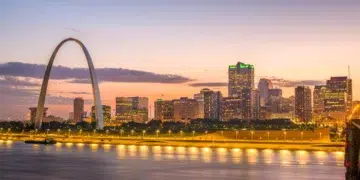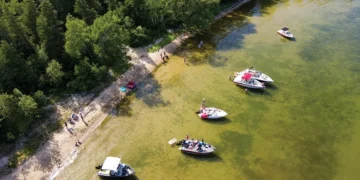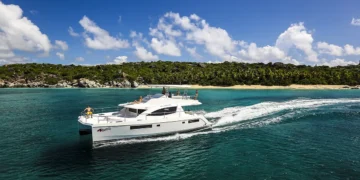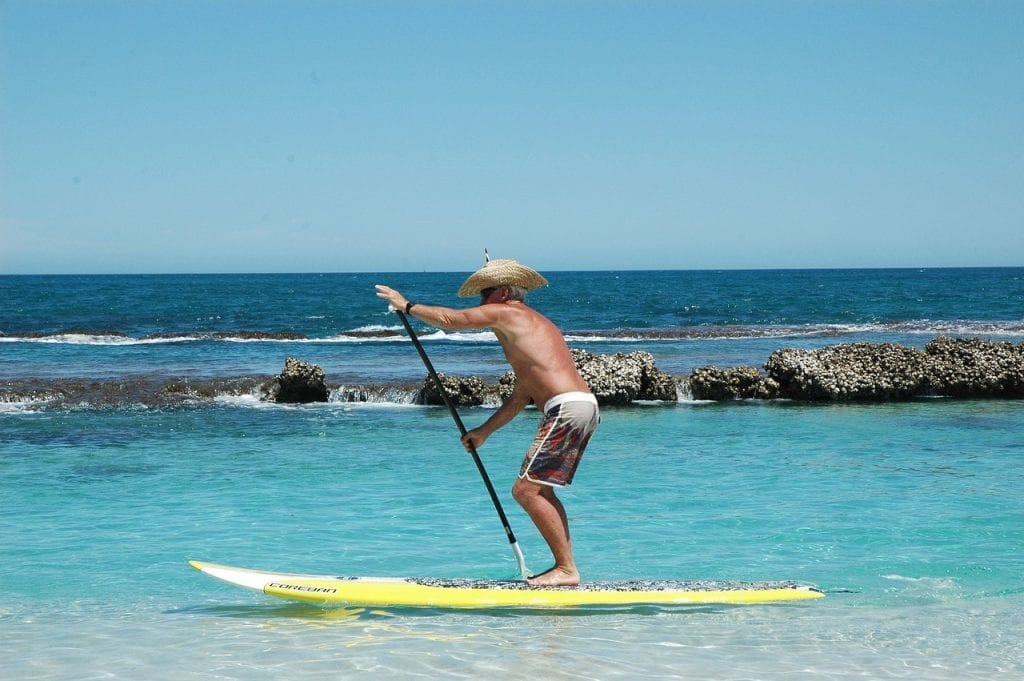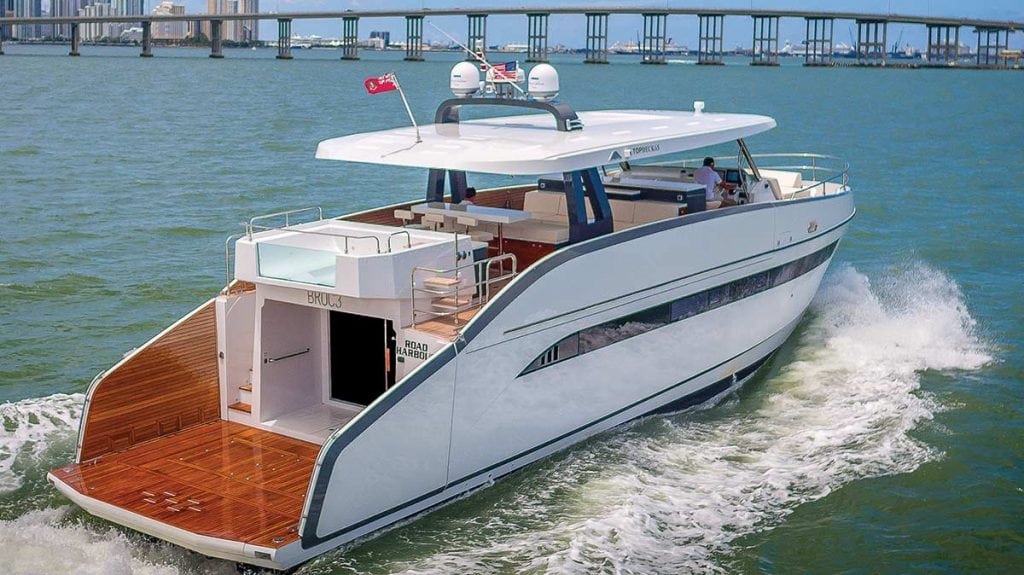The Big Apple was only a small part of the Great Loop route, but it made a huge impact.
Twenty-nine days, 419 nautical miles, 56 hours underway. The time we spent cruising the waterways of New York state is just a small part of the 6,000-mile Great Loop route we completed earlier this year. Of the 16 states through which we cruised, the Empire State’s spectacular cruising grounds made New York one we will not soon forget.
First up: The Big Apple
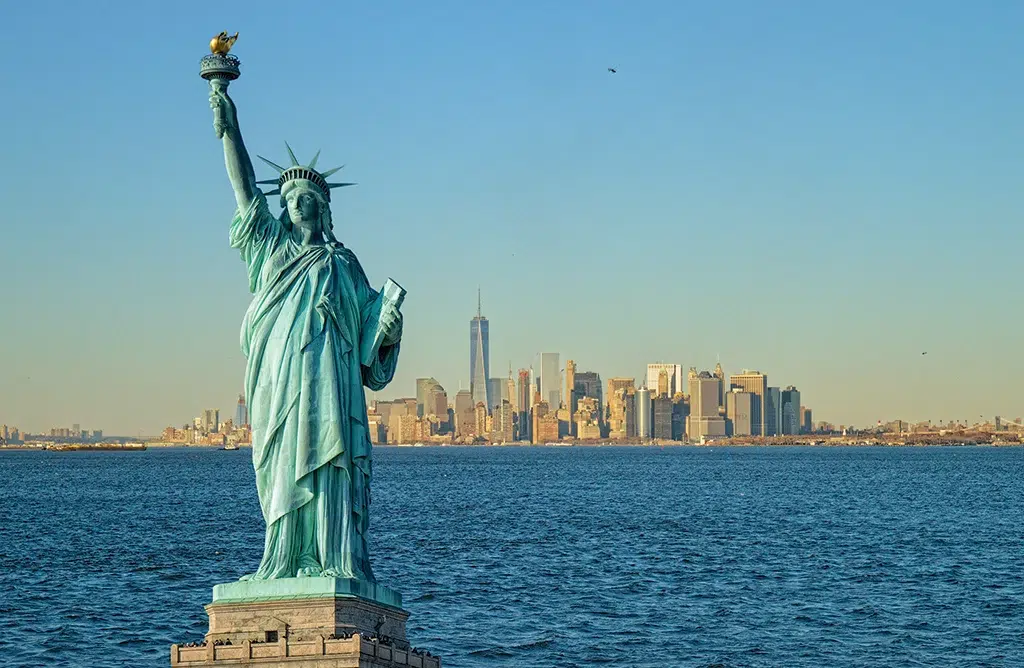
After a run of about 100 nautical miles off the shore of New Jersey, we rounded Sandy Hook and caught our first glimpse of the New York City skyline. Many boaters will chart a course directly for New York Harbor, but we headed for Staten Island to tie up for several nights in the more budget-friendly area of Great Kills Harbor. Dockage is generally a few dollars less per night in the outer boroughs, and you can still take advantage of New York City’s public transportation system to get to the heart of the city. From the Great Kills area, walk to a train station to hop on a train to the Staten Island Ferry Terminal. From there, the ferry takes you directly across New York Harbor to lower Manhattan. There are also buses available to midtown and any other area of the city you want to explore. The commute took more than an hour, but the savings on slip fees were substantial.
We splurged on our last few nights in the New York City area with a slip at Liberty Landing Marina in New Jersey. Current summer rates there are $7.50 per foot per night for a boat 44 feet or less. It’s pricey, but you can’t beat the location, nor the convenience. New Jersey offers the best views of the Manhattan skyline, and it’s a short and direct ferry ride from Liberty Landing to lower Manhattan. Plus, if you plan to visit Liberty Island to tour the statue, or Ellis Island to explore the place where your ancestors arrived in the United States, this is the marina from which to do it.
Subscribe Here For Weekly Updates
Moving the boat from Great Kills to Liberty Landing was an exciting day full of impressive sights. We made our way through the Narrows at the mouth of the Hudson River toward New York Harbor and the heart of the city, passing under the Verrazano Narrows Bridge with Brooklyn to starboard and Staten Island to port.
Although I was born in New York City and have visited the Big Apple many times, arriving by boat is a completely different experience. The excitement in the city is palpable and doesn’t stop at its shoreline. From the water, you get a front-row view of the scale of the skyscrapers and density at which they are packed onto the narrow island of Manhattan. You can spot the city from many miles away, which only adds to the anticipation and exhilaration of arriving there. As you enter New York Harbor, you’ll notice immediately the increase in vessel traffic of all kinds. Ferries will be dashing by and commercial traffic abounds, with tows pushing barges and tugboats assisting freighters. This is a working port, and nowhere is that more evident than in the channel that leads to the Statue of Liberty and lower Manhattan.
Soon enough, you’ll see the Freedom Tower, a gentle giant on the horizon towering over the city. Then, a highlight, the Statue of Liberty comes into view keeping a silent vigil over the waterway. You’ll have a few minutes where you can get both in the same picture so be ready.
New York City’s public transportation system is among the best in the world, so the fact that you’ve arrived by boat, and without a car, isn’t a detriment. You can easily get around the city to reprovision or take in the sights. If you have not visited New York City before, spend some time wandering around. There is no place like it!
The Hudson River Section
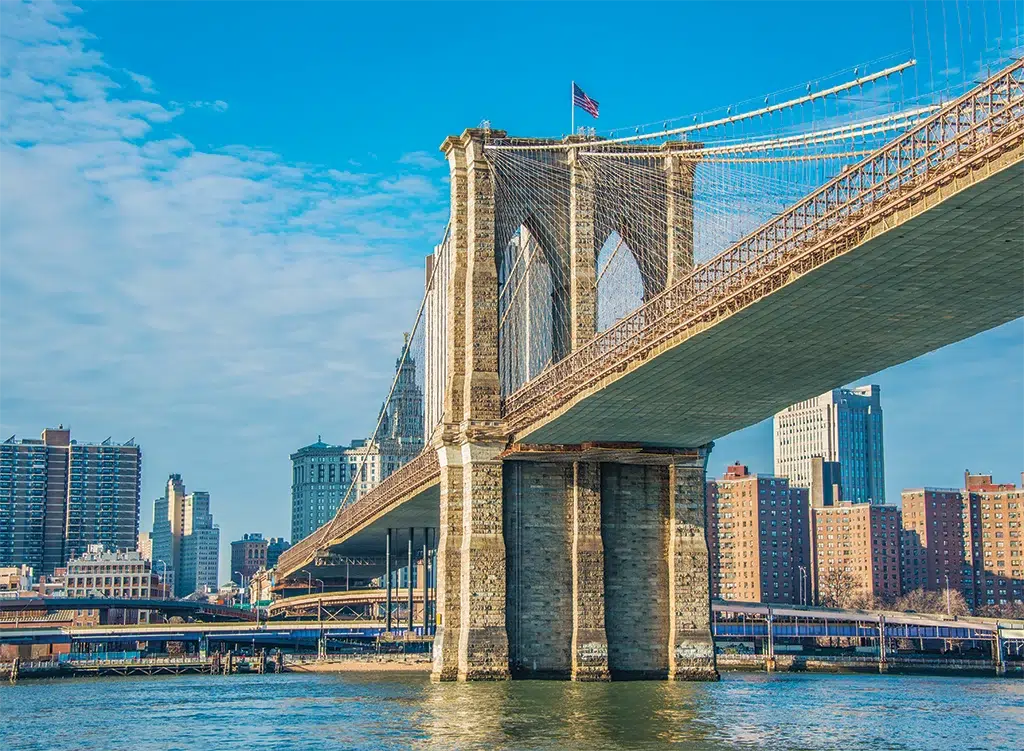
As we began our cruise up the Hudson River, we traveled the length of Manhattan Island and saw more skyline views and landmarks like the George Washington Bridge and the Little Red Lighthouse underneath that goes unnoticed by cars above but was made famous by the 1924 children’s book. Shortly thereafter, the scenery change is stunning both for its beauty and its stark difference from the skyscrapers of New York City. The Hudson River is deep with mountains on both sides, dotted with quaint lighthouses and steeped in history. We cruised 33 nautical miles that day, in awe of Hudson River Valley’s beauty, before tying up at a marina near Croton-on-Hudson.
The area surrounding this part of the Hudson River includes many things to see and do that don’t have easy water access, so if you plan to rent a car to explore via land, this is the place to do it. We visited the Culinary Institute of America where many of the nation’s top chefs are trained. The students operate multiple restaurants, so make a reservation in advance and prepare for a five-star meal
at a reasonable price.
Another must-see in the area is the United States Military Academy at West Point. While the campus has a lengthy shoreline along the Hudson River, you cannot dock your boat there, so traveling by car is necessary. If you take the public tour from the visitors’ center, you’ll be transported by bus around campus, stopping at landmarks like the Cadet Chapel, the cemetery, and a section of the chain that cadets pulled across the Hudson in 1778 to prevent British ships from proceeding north.
Another fascinating stop that does not allow private boats is Bannerman Castle, so take the tour boat from Beacon, New York, to visit it on Pollepel Island. Francis Bannerman was a Scottish immigrant who operated what was more or less an early Army-Navy surplus store. As such, he dealt in live munitions and was seeking a safe place to store those weapons until they were sold. What better place than his own island? In 1901, he began construction on the storage structure that he built to resemble the castles of his homeland and continued working on it until his death in 1918. But storing live explosives is fraught with peril. The munitions ignited in 1920, nearly claiming the life of Bannerman’s wife. The castle and the Bannerman home now sit abandoned.
With our shoreside visits complete, we were back on the water, cruising from Croton-on-Hudson to Kingston. Another day of majestic mountains, quaint lighthouses, and jaw-dropping scenery. Kingston is another historic, walkable town with a marina in the heart of the town. Be sure to check out the Hudson River Maritime Museum adjacent to the docks, and don’t miss Half Moon Rondout Café for hot, fresh donuts!
From Kingston, it is a little less than 60 nautical miles to the first lock in this area (the Federal Lock at Troy, New York) which we cruised over two days. Shortly thereafter, the many locks of the Erie Canal begin at Waterford, New York.
Subscribe Here For Weekly Updates
The Historic Canals to the Great Lakes
It took us five days to go from Waterford (the start of the Erie Canal) through 22 locks on the Erie to the Oswego Canal. The Oswego Canal’s seven locks took us to Lake Ontario. This route’s lowest fixed bridge is 21.15 feet.
If you can clear 17 feet, you can go through the Champlain Canal and Lake Champlain to reach the St. Lawrence River and access the Great Lakes that way. If you can clear 15.62 feet, you can take the Erie Canal all the way to Lake Erie. Our boat’s 18.6-foot air draft made our route for accessing the Great Lakes an easy choice.
Change of Scenery
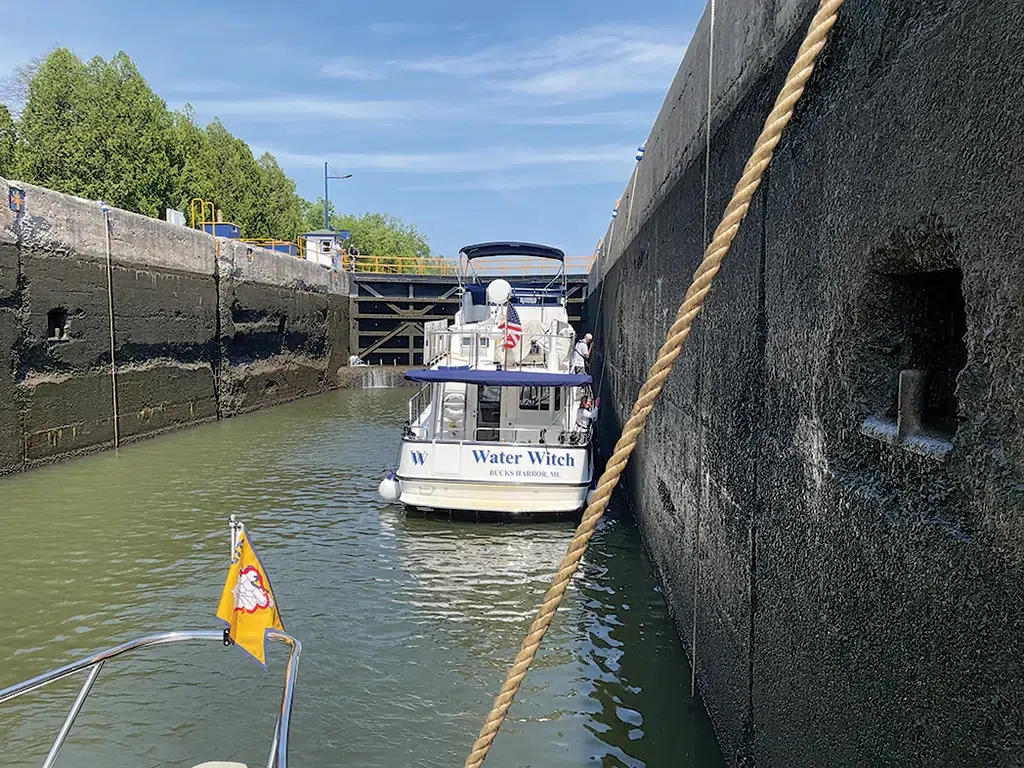
The sites along this section of the Erie Canal are a mix of farmland and small cities that perhaps have passed their heydays but are making a resurgence. Many towns offer a free wall for boaters to tie up for the night and explore the surrounding area, reprovision, or grab a bite to eat.
For boats of our air draft, turn into the Oswego Canal and take that to Lake Ontario where you’ll begin a new section of cruising. Another scenery change and big changes to the water are in store for you. Prepare for Lake Ontario’s deep waters and charming waterfront towns as you begin exploring the Great Lakes!
-by Kimberly Russo







